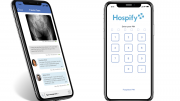Despite rapid advances in information technology and medical devices, most healthcare organisations have not achieved the same high reliability and safety as other industries, such as aviation, where mistakes can have catastrophic results. Executives and physicians alike are dissatisfied with costs and outcomes, and patients are rightfully fearful of medical errors, infections and miscommunication. The Institute of Medicine estimated in 1998 that medical errors cause as many as 98,000 deaths per year, and recent reassessments indicate that roughly 15 percent of hospital patients are still being harmed.
Healthcare’s challenges in achieving high reliability
The most important attributes of High Reliability Organisations (HROs) are a culture of safety, an emphasis on teamwork, a systems-oriented approach, professionalism and discipline. Discipline is where healthcare workers can make the greatest improvements. Doctors, nurses and hospital support staff aren’t averse to hard work, but they are notoriously resistant to rigid procedures. Without the willingness to consistently use standardised processes, a systems-based approach to patient safety simply cannot work.
Another roadblock to reliability and patient safety is the frequent breakdown in communication during patient hand-offs. Too many “silos” of information exist within healthcare organisations, and individual medical centres, departments, units and even floors have trouble communicating with one another. As patients move throughout large health organisations – and between them – data may be lost among disparate health information systems (HISs).
An InterSystems poll of HIT leaders confirmed the need for better information sharing. When asked what their biggest challenge was, more than half of respondents identified either “getting systems to talk to each other” or “care coordination gaps,” which revealed a lack of interoperability. In terms of healthcare, what interoperability really means is the ability for us to effectively and safely pass along crucial information about a patient that positively impacts the outcome of their care.

Aviation as a high reliability organisation
The aviation industry’s journey from high risk and low reliability to “near perfection” in customer safety is a perfect example of an HRO. During and immediately after World War II, the industry saw incredible advancements in technology but little improvement in safety. Due to efforts from the Federal Aviation Administration, the National Advisory Committee for Aeronautics and other government institutions, crashes and fatalities dropped drastically during the 1940s and 1950s. Even now, aviators continue to lower deaths with small improvements to their standardised procedures.
These standardised procedures allowed the industry to progress rapidly. Regardless of their skill levels, pilots and support-crew members began to employ a variety of methodical checklists. Whereas doctors tend to view such standardisation as a hindrance, pilots understand its benefits. Consistent procedures allow them to safely apply their skills to an ever-changing variety of scenarios.
This systems-based approach has also allowed pilots to efficiently adopt new technologies over the last half-century. Despite the increasing complexity of airplanes, the interfaces aviators use has remained simple. Well-designed automation simplifies the complex operations of each instrument, and the systems’ intricacies do not create new difficulties for the end users. In the same way, interoperable informatics platforms and standardised record-keeping procedures can help clinicians keep up with the increasing complexity of new medical software.
Most importantly, airlines had to drastically change their Crew Resource Management practices to fully implement their procedural changes. Like the current situation in healthcare, the airlines’ main safety problems weren’t technological, but hierarchical. Subordinate crew-members were not allowed to challenge faulty orders, and small communications breakdowns led to catastrophic crashes. By focusing on assertive but non-threatening communication, crews improved their collective situational awareness and problem-solving skills.
Crew Resource Management is just as valid in healthcare. Research has found that situations where subordinate team members avoided sharing information that could have altered their patients’ outcomes. Given that doctors cannot be present at all times, the only way to receive and act upon life-saving information is to empower all team members to voice their concerns.
Healthcare organisations achieving breakthroughs in patient safety
Although the healthcare industry as a whole has not achieved high reliability, a few sub-sectors and hospitals have implemented effective patient safety programs.
One example shows that anaesthesiologists comprised roughly three percent of physicians throughout the 1970s, yet they were responsible for 12 percent of all malpractice payouts. In 1984, national media publicity showcased the lack of safety, prompting healthcare organisations to refine their practices. Stakeholders established the Anaesthesia Patient Safety Foundation in 1985, and they continued to improve and standardise the practice of anaesthesiology throughout the following two decades. Anaesthesiologists are now recognised for their culture of safety, and attributed perioperative mortality has fallen to roughly one patient in every 200,000 to 300,000 cases. Just as frequent fliers worry little over the possibility of a crash, surgical patients now have little to fear from the anaesthesia itself.
Using information technology for patient safety: strategies for success
Technology is not the only answer to ensure patient safety, but it is an important part of the solution. No single piece of software can alter the culture of an entire health system; however, interoperability between software applications can drive improvements in teamwork and communication. By harnessing available data, connecting users and helping to coordinate patient hand-offs, interoperability platforms can assist stakeholders in creating safer, more systems-based approaches across their organisations.
Of course, integrating new technology is easier said than done. Healthcare organisations need to build foundations for interoperability by capturing and sharing data across users, hospitals and even different health and care systems. Training and development can teach stakeholders to understand the masses of data they’ll be able to access, usually through the creation of new checklists, goals sheets and other electronic resources. It is also vital to engage physicians, nurses and other clinicians who can act on this newly available data.






